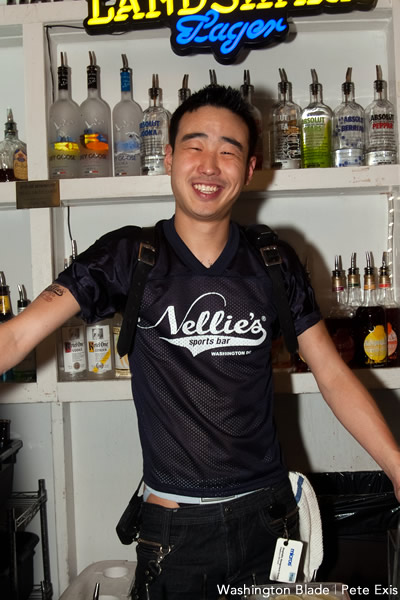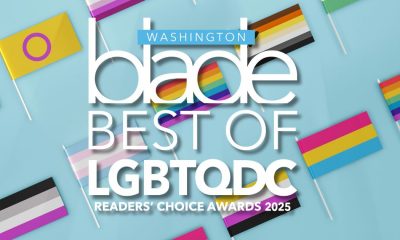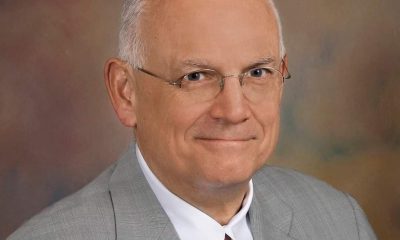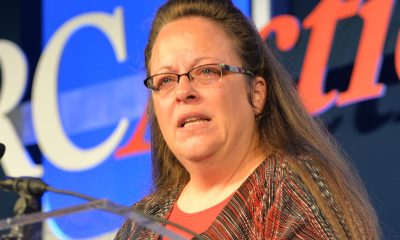Arts & Entertainment
Gone too soon
Teen suicide has received renewed awareness but the issue can affect gays well into adulthood
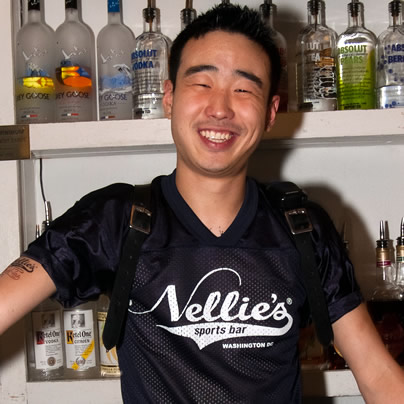
When David Chung took his own life a few weeks ago, his death sent shockwaves through a community that knew him as the smiling Nellie’s bartender. As hundreds gathered at his funeral service, many only wanted to remember the happiness he brought to those around him.
But Chung’s death is a reminder of a serious and often silent illness that has long plagued the LGBT community. According to a 2008 study from the Suicide Prevention Resource Center, lesbian, gay and bisexual youths and young adults are three times more likely to report suicidal ideation (thoughts about suicide) and as high as seven times more likely to have reported attempting suicide. Research in these areas is still limited since mortality data does not report sexual orientation.
And while LGBT teen suicide has gotten a lot of attention in the last two years since a spate of bullying and suicide cases have been reported around the country leading to gay columnist Dan Savage’s “It Gets Better” campaign and renewed awareness of the Trevor Project (thetrevorproject.org), an LGBT youth suicide prevention non-profit, depression and suicide disproportionately affect LGBT people at various ages.
Randy Pumphrey, manager of behavioral health at Whitman-Walker Health, says part of suicide prevention is being able to tell the warning signs. He admits, however, that it is not easy for people not trained in the medical field to differentiate between normal ups and downs and full-blown depression.
“I think it is going to be hard, unless you know the person really well,” he says. “You need to watch for extreme changes in behavior.”
Some of these behavioral changes include not acting the same at work or in social groups, withdrawing from social situations, engaging in more risky activities and verbalizing a death threat or wish.
“A lot of people will make outright allusions to suicide like, ‘I won’t be here anymore,’” says Tamara Pincus, a clinical social worker and therapist. “They may even start to give their possessions away to people, indicating that they are making plans to take their lives.”
Both Pumphrey and Pincus cite the stigma LGBT people face as a big stressor on those already predisposed to depression.
“It might be internalized homophobia,” Pumphrey says. “People who are having trouble identifying as gay or lesbian when they are in a heterosexual marriage or not being able to come out at their job, they might attempt suicide. This feeling of rejection, that can be a really huge thing.”
Mary Lou Wallner, minister at T.E.A.C.H. Ministries, directly understands how rejection can affect a person. Her daughter, Anna, committed suicide in 1997. Wallner says her daughter came out to her in a letter in 1988.
“At the time I was deeply entrenched in a conservative church,” she says. “When she came out, I thought that it was an abomination. I told her so in a letter.”
In the letter, she wrote, “I will never accept that in you. I feel it’s a terrible waste, besides being spiritually and morally wrong … I do and will continue to love you, but I will always hate that.”
Waller says she did not understand that her sexual orientation was not a choice. Nine years went by during which they continued contact but then in 1996, Anna began seeing a therapist who encouraged her to cut off contact with her family. Wallner began collecting cards and money she wanted to give her daughter in a shoebox so when they began speaking she could give them to her. Wallner never got the chance.
“There were probably a ton of warning signs,” she says. “I feel there were clues she was trying to give me. I have many, many regrets.”
Before Anna came out to her mother, she tried slitting her wrists and in another incident, took a whole bottle of aspirin. In hindsight, Wallner says she would have, “gotten in her car and driven to her right away” once she had cut off communication.
Pumphrey says the challenge is not only identifying the warning signs of depression, but also taking action. He says it might be a challenge to speak with someone who is going through this, but in the end it would be worth it.
“What happens in our culture is people are afraid to ask the questions about how a person is thinking and feeling,” he says. “If a person is having suicidal thoughts, they are usually thinking about how they are going to do it. Getting their plan helps you intervene and it may buy you some time.”
If a person seems to be posing an immediate threat to themselves or others, Pumphrey says the person should be taken to an emergency room or 911 should be called. This way he/she can be evaluated and possibly get treatment.
“My prerogative at this time is going to be their safety,” he says. “They may be angry upfront because it feels like a violation, but this is really serious and they might need help.”
Pincus says there are still several challenges facing the LGBT community, especially teenagers and young adults who are really connected to their family. She suggests if families are not supportive of their child’s sexual orientation, that person should seek support outside of their family.
“I think we would like to say that our society is getting past the stigma of LGBT, but we are really not,” she says. Pincus, who came out as bi when she was 16, says that the continual harassment and bullying that occurs in schools and other social venues to LGBT people is a major reason why the suicide rate is higher than for other groups.
“People are still getting beat up for holding hands with their partners and transgender people are getting shot because of their gender identity,” she says.
Since her daughter’s death, Wallner has shared her story with other groups around the country and was featured in the documentary “For the Bible Tells Me So.” She began T.E.A.C.H. Ministries, which stands for “To Educate About the Consequences of Homophobia.” She tries to spread the message of tolerance, not only for the LGBT community, but also for those who may not understand completely.
While she does not discuss scripture with others, she does have a message for other believers.
“It’s not a choice, if it is not a choice it can’t be a sin,” she says.
Dining
Spark Social House to start serving alcohol
D.C.’s only ‘LGBTQ alcohol-free bar’ changes course

Washington, D.C.’s only LGBTQ alcohol-free bar will lose that distinction in December: Spark Social House, located at the corner of 14th and U streets, N.W., will no longer serve only booze-free drinks.
Spark Social, as it is commonly known, received significant media attention and accolades when it debuted in March. Opening in the beating heart of the LGBTQ community’s social scene, its doors stand next to other popular nightlife establishments, including Crush, Bunker, District Eagle, and Revolt (which opened after Spark Social). All of those other bars serve alcohol.
Spark maintained a separate identity, creating a “third space” for sober guests or those who did not wish to spend their evening in an alcohol-forward space. Owner Nick Tsusaki, a former bartender, opened Spark Social to fill a gap he saw in queer nightlife establishments that centered drinking. Instead, Spark was intended to be a convening bar. By day, it has served coffee and tea as a café for remote workers, meetings, and catch-ups. In the evening, the bar hosts a wide array of events, with DJs, dancing, drag queens, speakers, open mic nights, and stand-up comedy, movie showings, among other events.
At the bar, it served cans, bottles, and craft cocktails, as well as “wellness drinks” or functional beverages like mushroom elixirs, Kava, and kombucha. All of these are currently non-alcoholic. Currently, in November, the bar is serving seasonal morning drinks like toasted almond and French Toast lattes, plus non-alcoholic cocktails like a “Hottie Hottie” with non-alcoholic spiced rum, lemon, and maple butter; plus a maple espresso “martini” without liquor, which includes mushroom tinctures.
Spark Social, even in its short time in existence, won “Best DC Coffee Shop” in the 2025 Washington Blade annual poll.
Nevertheless, in early November, the Spark owners and leadership team hosted a town hall to share updates and hear directly from the community about the next chapter for Spark.
According to the bar’s Instagram posts, the town hall reviewed the intent and purpose behind the bar: to create a queer third space where people can connect, create, and feel at home.”
“After eight months as a fully non-alcoholic bar, we’ve learned that sobriety exists on a spectrum and inclusion means offering choice.”
To that end, in December, Spark’s offerings will evolve. Instead of serving only drinks without alcohol, there will be a new “1 for 1” menu in which every cocktail comes in two versions: booze and boozeless. While alcohol will be served, the bar owners insist that they remain committed to maintaining its welcoming and relaxed vibe.
In a separate post, Spark wrote that “Although this was not our intent when we started the business, after 6 months of operations we’ve made the difficult decision to change our business model so that we can keep providing this space to the community.”
They acknowledged that this pivot might have “come as a surprise,” and offered to received feedback to ensure that the bar’s initial objective of being a unique space could continue.
Alcohol will only be served at the bar in the evenings during the week, and all day during the weekend.
Tsusaki spoke to the Blade about the changes and offered these statements:
“When we opened, the goal was to create a queer third space where people could spark a connection, spark creativity, spark an idea — especially for folks looking for an alternative to the typical drinking environment,” Tsusaki said. “From day one, Spark has been about the vibe — a place where you can just exist, feel at home, and be surrounded by community without pressure or pretense. After eight months as a fully non-alcoholic space, we learned a lot about what people actually want from spaces like this. Most folks exist somewhere on a spectrum of sobriety — some are fully sober, some are sober-curious, some drink occasionally. We realized that if our mission is to bring people together, inclusion has to mean options for everyone.
“We had to face the financial reality of running a small independent space in D.C. The city has been hit hard — especially with reduced spending and recent federal layoffs — and it’s made things tough for hospitality businesses like ours. Adding alcohol helps make Spark sustainable so we can keep doing what we do: building community, creating jobs, and keeping this space alive for the long haul.
“We’re using this moment to make the space even better — enclosing the back patio so it’s usable year-round, upgrading our DJ booth and sound system, and making a few design tweaks that better reflect the energy and creativity Spark has always had.”
Photos
PHOTOS: Miss Gay Mid-Atlantic America
Victoria Bohmore crowned in regional pageant held at Freddie’s Beach Bar

The 2025 Miss Gay Mid-Atlantic America Pageant was held at Freddie’s Beach Bar in Arlington, Va. on Friday, Nov. 7. Victoria Bohmore was crowned the winner, with Lady Lords named first alternate. Bohmore and Lords both qualify to compete against the winners of the Miss Gay Maryland America Pageant as well as other state and regional title holders from across the nation at the Miss Gay America Pageant in January.
(Washington Blade photos by Michael Key)
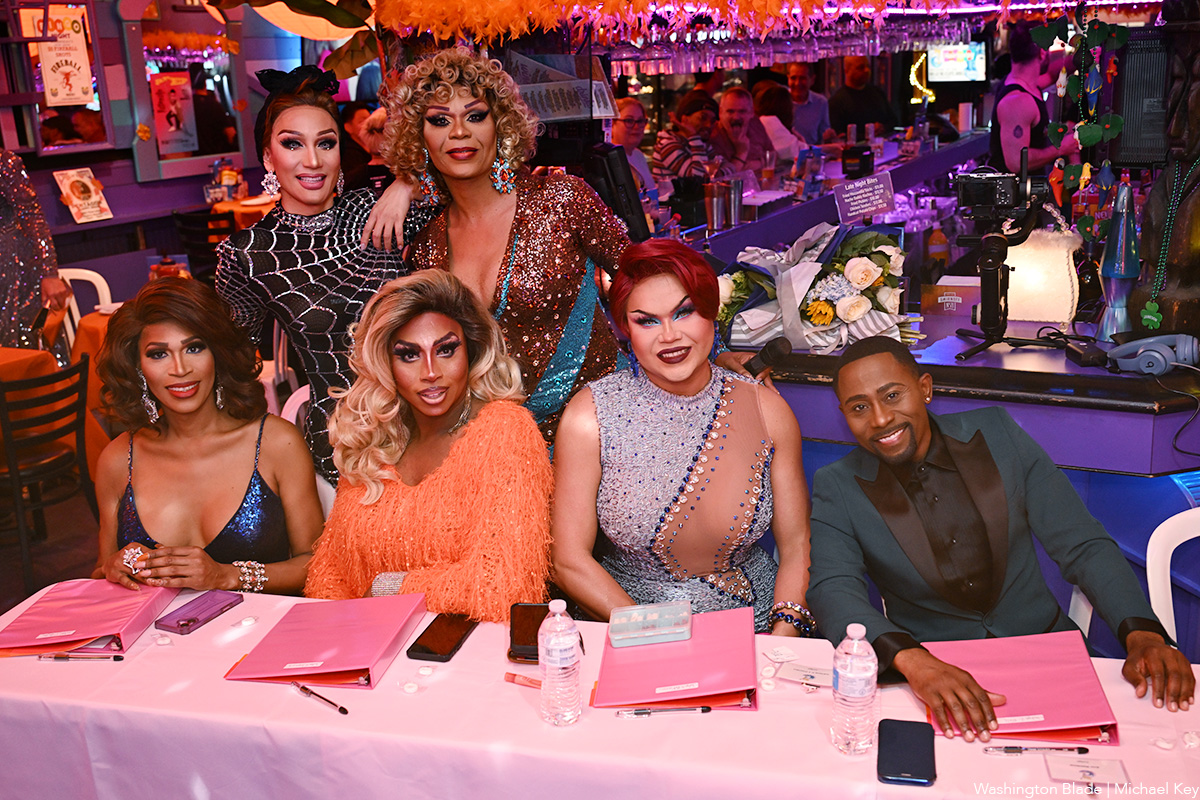


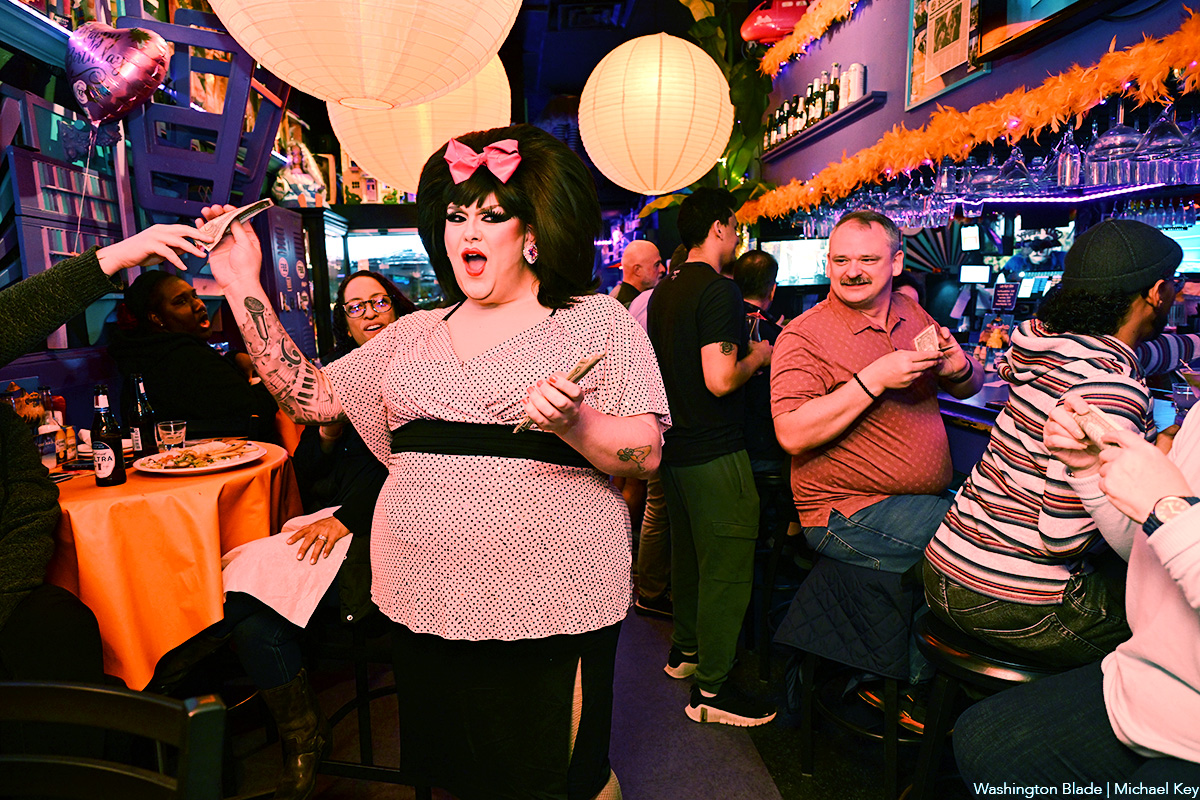






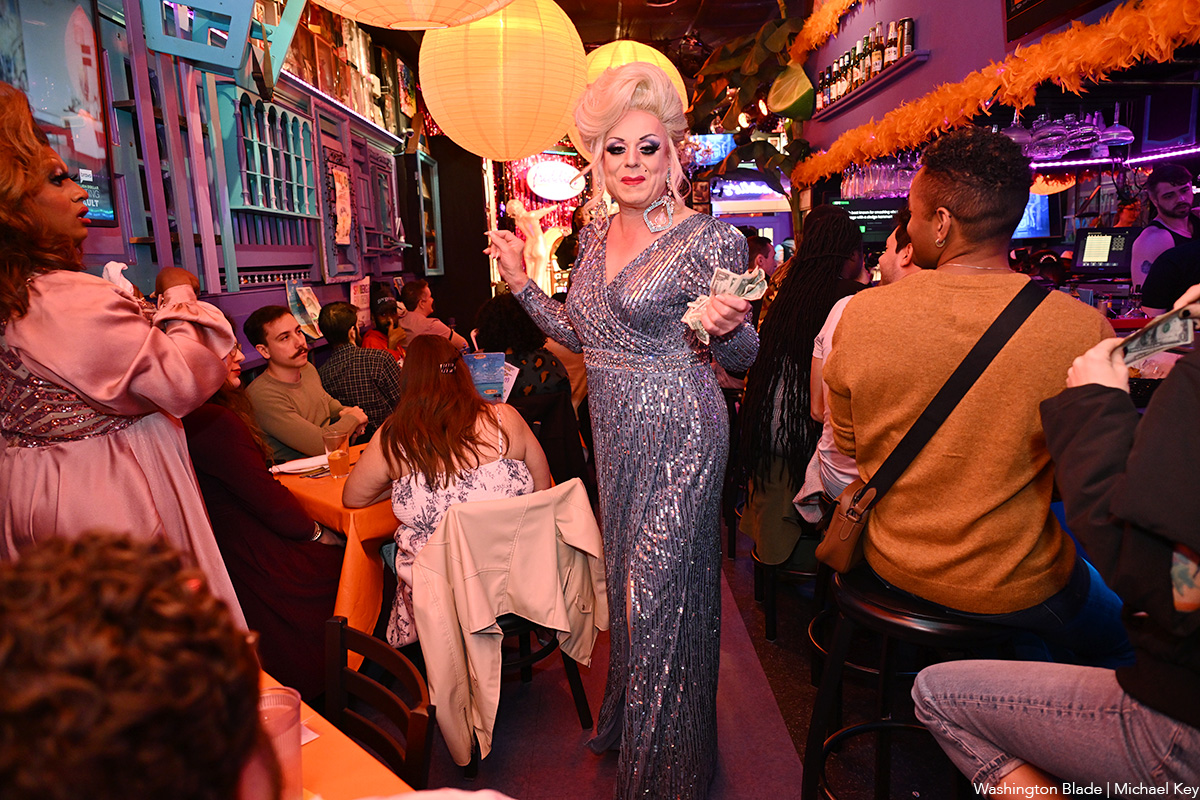



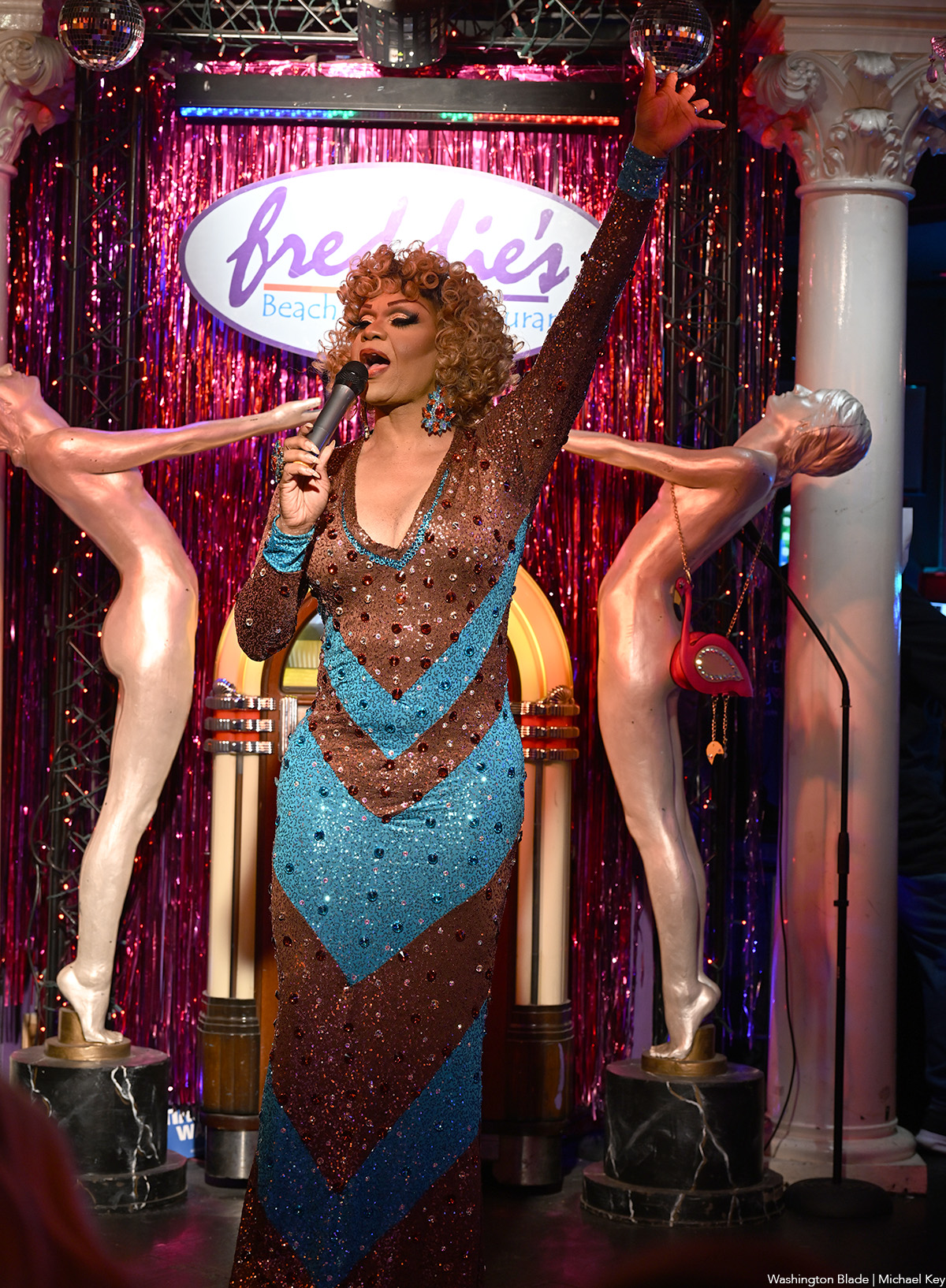


Books
A history of lesbian workarounds to build family
Fighting for the right to have and raise kids
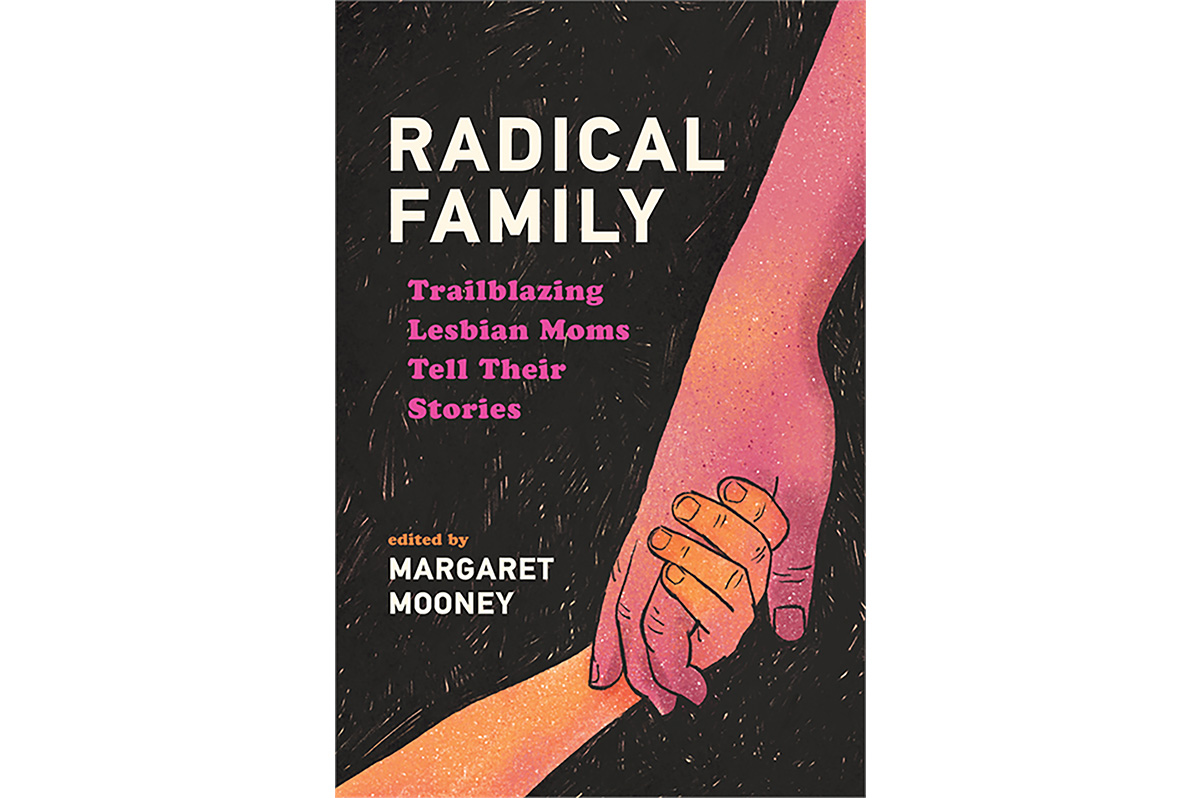
‘Radical Family: Trailblazing Lesbian Moms Tell Their Stories’
Edited by Margaret Mooney
c.2025, Wisconsin Historical Society Press
$20/150 pages
You don’t have a white picket fence with an adorable gate.
The other parts of the American Dream – the house in the suburbs, a minivan, and a big backyard – may also be beyond your reach. You’ve never wanted the joyous husband-wife union, but the two-point-five kids? Yeah, maybe that’s possible. As in the new book “Radical Family,” edited by Margaret Mooney, it’s surely more so than it was in the past.

Once upon a time, if a lesbian wanted to raise a family, she had two basic options: pregnancy or adoption. That is, says Mooney, if she was willing to buck a hetero-centric society that said the former was “selfish, unnatural and radical” and the latter was often just simply not possible or even legal.
Undaunted, and very much wanting kids, many lesbians ignored the rules. They built “chains” of women who handed off sperm from donor to doctor to potential mother. They demanded that fertility clinics allow single women as customers. They wrote pamphlets and publications aimed to help others become pregnant by themselves or with partners. They carefully sought lesbian-friendly obstetricians and nurses.
Over time, lesbians who wanted kids were “emboldened by the feminist movement and the gay and lesbian rights movement” and did what they had to do, omitted facts when needed, traveled abroad when they could, and found workarounds to build a family.
This book tells nine stories of everyday lesbians who succeeded.
Denise Matyka and Margaret McMurray went to Russia to adopt. Martha Dixon Popp and Alix Olson raised their family, in part and for awhile in conjunction with Popp’s husband. Gail Hirn learned from an agriculture publication how to inseminate herself. MC Reisdorf literally stood on her head to get pregnant. Mooney says that, like most lesbian parents then, she became a mother “without any safety nets…”
Such “struggles likely will feel familiar as you read about [the] desire to become parents…” says Mooney. “In short, these families are ordinary and extraordinary all at once.”
In her introduction, editor Margaret Mooney points out that the stories in this book generally take place in the latter part of the last century, but that their relevance is in the struggles that could happen tomorrow. There’s urgency in those words, absolutely, and they’re tinged with fear, but don’t let them keep you from “Radical Family.”
What you’ll see inside these nine tales is mostly happy, mostly triumphant – and mostly Wisconsin-centric, though the variety in dream-fulfillment is wide enough that the book is appropriate anywhere. The determination leaps out of the pages here, and the storytellers don’t hide their struggles, not with former partners, bureaucracy, or with roadblocks. Reading this book is like attending a conference and hearing attendees tell their tales. Bonus: photos and advice for any lesbian thinking of parenthood, single or partnered.
If you’re in search of positive stories from lesbian mothers and the wall-busting they did, or if you’ve lived the same tales, this slim book is a joy to read. For you, “Radical Family” may open some gates.
The Blade may receive commissions from qualifying purchases made via this post.
-

 U.S. Supreme Court22 hours ago
U.S. Supreme Court22 hours agoSupreme Court rejects Kim Davis’s effort to overturn landmark marriage ruling
-

 District of Columbia5 days ago
District of Columbia5 days ago‘Sandwich guy’ not guilty in assault case
-

 National5 days ago
National5 days agoPelosi won’t seek re-election next year
-

 U.S. Supreme Court5 days ago
U.S. Supreme Court5 days agoSupreme Court rules White House can implement anti-trans passport policy

